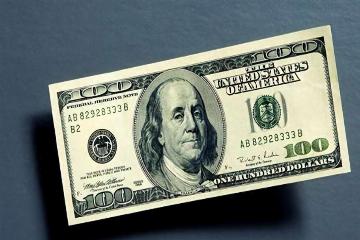The financial landscape of the world today is dominated by a few currencies, among which the U.Sdollar stands tall, often overshadowing others like the Euro and YenUnderstanding the intricate dynamics at play with the dollar can provide clearer insight into the complexities of international trade and economicsHistorically, gold was considered the ultimate currency, serving as a standard by which all economic activities were measuredHowever, in the current era, while gold maintains its value, the dollar's unique position in international markets cannot be understated.
The U.Sdollar is often referred to as the world's reserve currency, a title that offers it limitless purchasing power on the global stageWith this power comes an illusion that the dollar might never depreciateHowever, a closer examination reveals a more nuanced pictureThe U.Sgovernment's creditworthiness has come under scrutiny due to mounting national debt and an unpredictable economic landscape
Advertisements
Recent actions taken by the Federal Reserve, including interest rate cuts intended to stimulate the economy, hint that a depreciation of the dollar might be on the horizon.
The Federal Reserve's decision to cut rates in an attempt to provide economic relief raises concerns about the future strength of the dollarDespite its robustness in recent years, exacerbated by relentless inflation post-pandemic, the recent policy shifts suggest a forthcoming adjustmentIn a series of 11 consecutive rate hikes aimed at curtailing inflation and stabilizing the economy, the Fed's actions created an environment in which substantial foreign investments flooded into the dollar, driving up its value — a phenomenon many have labeled as a "dollar shortage." However, this scenario is evolving.
The rise of the dollar has led to a scenario where the U.Shas benefitted at the expense of other nations, deftly extracting wealth from economies around the world
Advertisements
With countries struggling under the weight of a strong dollar, many have seen their currencies devalued significantlyThe Japanese yen, for instance, has faced severe depreciation, leading to speculation regarding its long-term viabilityMany lesser-known currencies have experienced similar fates, suggesting a systemic issue with currency dependency on the dollar.
Moreover, the U.Sholds a unique position of financial pricing power, enabling it to dictate terms not just for commodities, but also for debt instruments, shares, and other financial assets globallyThis pricing authority places the dollar at a strategic advantage, propping up the currency's dominance across various marketsThe privilege of being a global reserve currency accompanies substantial economic benefits, including the phenomenon known as "seigniorage," which refers to the ability of the United States to issue currency and effectively tax the world through dollar inflation.
As time progresses, there is an increasing shift toward de-dollarization, fueled by global ambition to establish alternative frameworks for international exchange
Advertisements
Cryptocurrency and digital currency initiatives by various nations are being explored to lessen reliance on the dollarAlthough this movement is in its infancy, it indeed reflects an aspiration to diminish the dollar's grip and foster a multi-polar monetary systemSuch shifts could potentially diminish the dollar's previous stronghold and lead to broader economic ramifications for the United States.
The unprecedented expansion of U.Scurrency supply in recent years has seen the national debt soar alarmingly, nearing $35 trillionThis increase in currency dilution poses risks, as the capacity of the Federal Reserve to manage interest rates dwindlesThe recent decision to reduce interest rates is indicative of a broader strategy meant to stabilize the economy but ushers in the uninvited concern of dollar depreciation—an outcome with profound implications for global economics.
As the dollar finds itself facing potential decline, other currencies may experience relative appreciation
- Factors Influencing Energy Futures Market
- Trends in Financial Technology Development
- Trends in Capital Flows in Emerging Markets
- Meeting the Needs of Foreign Enterprises
- Applications of Supply Chain Finance
Yet, due to economic fundamentals, other large currencies—like the Euro, British Pound, or the Canadian Dollar—struggle to gain footing against the dollarEven with the recent surge of the yen, which has aggressively attempted to regain value through rate hikes, many currencies find themselves stuck as the various economies grapple with their own set of challenges.
This raises significant questions about the long-term sustainability of the dollarThe prowess of the U.Sas it exists today is not the same as it was in decades pastThe potency of U.Seconomic hegemony has weakened, and its approach to international relations—including the controversial sanctions imposed on countries like Russia—has resulted in diplomatic fallout and a push from various nations to seek alternatives to the dollarThe embattled state of trust in the U.Sfinancial system further complicates the prospect of a stable dollar for the foreseeable future.
The construction of the U.S

dollar index in 1973 reflects the multidimensional nature of currency valuationBy quantifying the dollar's worth against a myriad of other significant currencies, the index offers insights into currency strength and relative valueAs currencies around the world adjust to the changing financial realities, the index serves as a beacon for analysts seeking to navigate the complexities of the international currency marketplace.
The recent fluctuations in how the Chinese Yuan exchanges for the dollar signal an impending shift in economic power dynamics, especially after the Federal Reserve's recent acknowledgment of necessary rate cutsObservers now watch with keen interest as the current dollar trend could spell a larger transition in regional and global trade agreements.
Looking forward, the reality of U.Seconomic demands complicates the picture furtherPredictions indicate that in 2024, the United States will owe approximately $1.25 trillion in interest payments, which eclipses its annual military expenditures